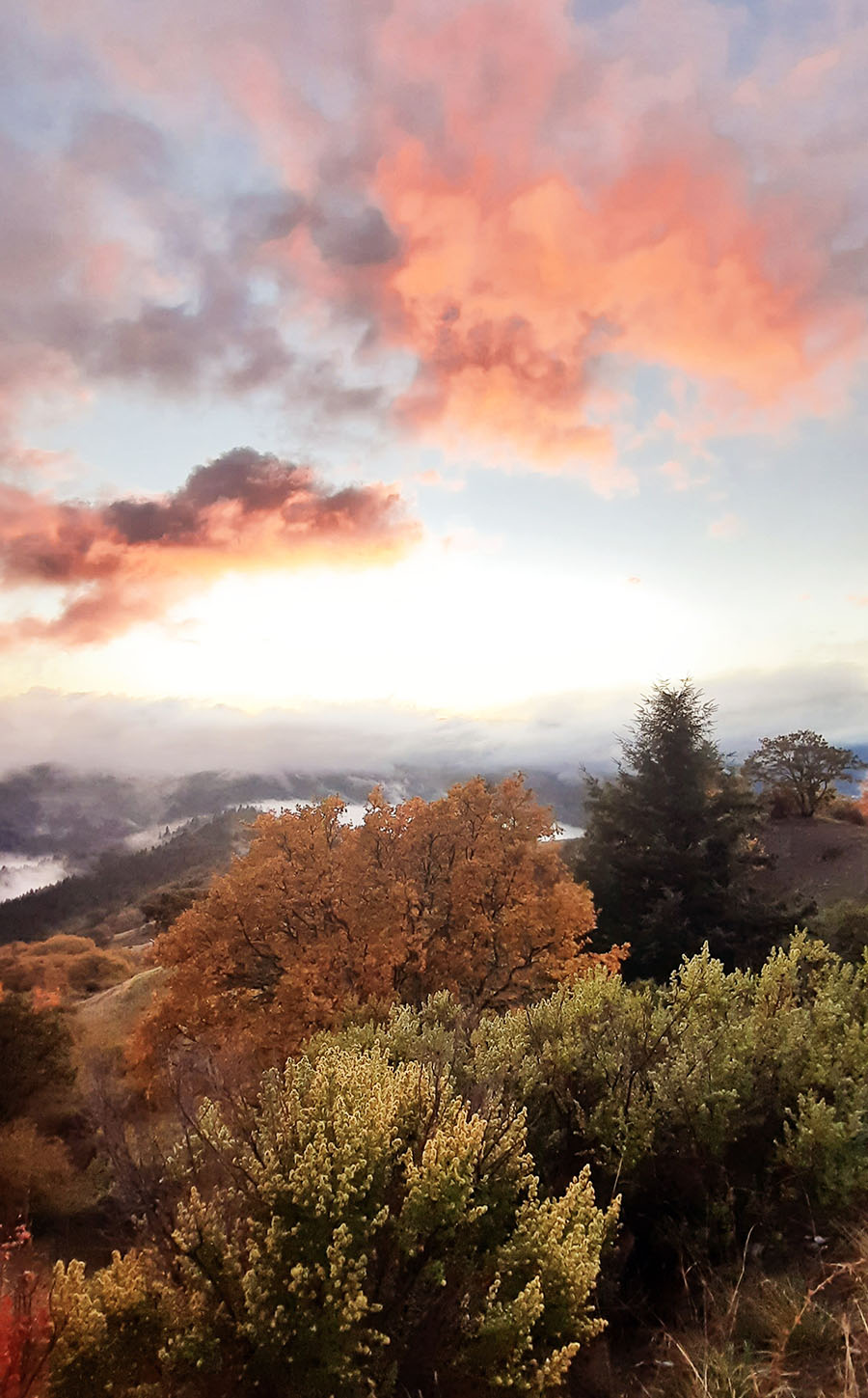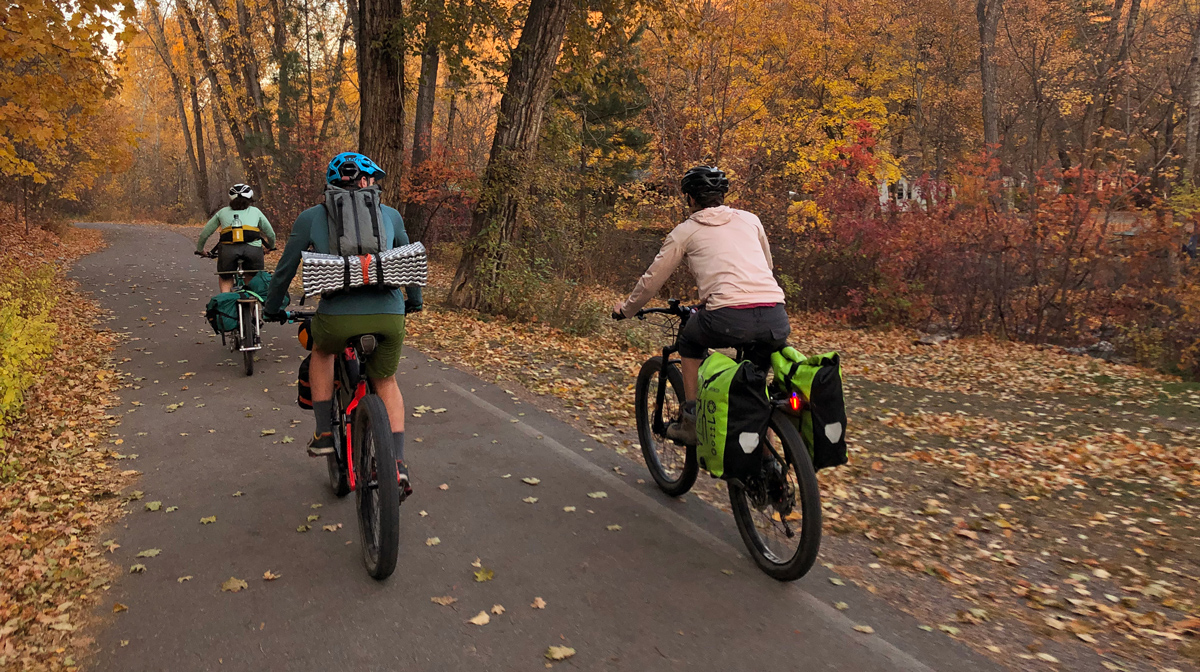Botany from the Bike
Despite the heat waves and wildfires smoldering across the country into September, fall is approaching. This past weekend, I found myself shocked to see strips of yellow and orange maple leaves in the middle of still-green leaves while riding in Oregon, a few hundred miles north of where I live. I felt both, “How dare they?! I am NOT done with summer,” and in disbelief, because it is still quite warm outside. Where did the long evening rides go? The ones where you feel like a kid, riding until dark, eating a late dinner, and waking up early only to do it all again the next day? Well, they happened, but something about summer’s warmth made me think it would last forever. Regardless, the leaves will continue to change colors on cue from the diminishing daylight, no matter how I feel about it.
As sunset moves from the dawdling hours of 8:00 or 9:00 PM to something more restrained like 7:00, then 6:00 PM, the swollen, distended days of summer fade away with the fireflies and the warm nights. Sunrise no longer wakes us at the ungodly hour of 5:00 AM, and instead, 6:00 AM still brings stargazing and owl hoots. These shorter days remind me of a button-up shirt or a svelte bicycle. There’s something signaling that the chaotic fun, ice cream cones, and heat of summer are over, and that it’s time to prepare for more serious months, with more time spent inside. Likewise, the shorter days send trees the same signal, and they prepare themselves accordingly. Less light and warmth means less food for the trees, since sunlight and water form the basis of a tree’s sugar diet. All spring and summer, chlorophyll, a natural chemical inside the leaves, transforms sunlight and water into sugar. Chlorophyll is also what makes leaves green.
A few weeks after my initial shock of the ensuing season, a ride through a local valley had me pedaling through a tunnel of yellow, as if I was swaddled in baby chick feathers with sunlight streaming through. The delight traveled from my eyelashes to my legs as I cycled through undulating hills, suddenly wishing for everyone on earth to have this feeling — the experience of being in absolute awe of nature’s splendor, seemingly for our enjoyment. As I cruised through the tunnel of yellow maple leaves, I realized that even though I love the heat of summer, that doesn’t mean I have to trade allegiance once fall arrives. The colors are a gift, swathes of glorious gold and amber across hillsides and down streets. Or maybe, if you bike tour through an area dominated by conifers, the aureolin brilliance is a flash in the pan, a bright relief from an otherwise monotonous green landscape.

Once the leaves get their cue from the shorter days, it is time to stop photosynthesizing and close the sugar-making shop for winter, sort of the opposite of Santa’s workshop. A tree then absorbs as many nutrients as it can from its leaves, and only residues of chlorophyll remain. As the amount of chlorophyll wanes, orange and yellow pigments that were always present are revealed, since they are no longer covered up by the abundance of green. The hues of yellow, orange, and red vary depending on the mixture of these pigments and the amount of leftover chlorophyll. I like to imagine a microscopic ant artist inside each leaf, mixing a palate of leftover chlorophyll and other pigments, saying, “Ah! This is all I have to work with — better make it as brilliant as possible! Laa-dee-dah.”
As you have likely noticed, not all species turn the same color, and some are more prone to certain parts of the color wheel, just like some artists, and some cyclists, tend toward a certain style of riding, dressing, traveling. Sugar maples tend toward orange, red maples turn scarlet, big leaf maples turn bright yellow. Oaks tend toward brown and sometimes red. Hickory and aspen turn a gilded yellow. The little aspen leaf stem (also called a petiole) is flat, allowing it to swivel around even in the tiniest breeze. The Latin name for aspens is Populus tremuloides, reflecting this trembling or waving. I like to think the yellow aspens are cheering me on like spirit fingers, and I wave back. But I digress.

For dogwoods and sumacs, an additional chemical reaction takes place — some sugars get trapped in the leaf and produce a red pigment that was not there in the growing season. Imagine a little sugar saying, “Help me! I can’t get out of this leaf! Oh well, I guess I’ll make red.” The pigment is called anthocyanin, and makes the leaves redder, or even red-purple. Temperature and rainfall also influence the degree and the duration of fall color. Low temperatures above freezing will encourage anthocyanin production, resulting in brighter reds. But an early frost can hinder the brilliant red color.
After the tree sucks the nutrients out of the leaves, it starts building a protective seal between its branch and leaves to minimize the loss of resources during the cold months. It is preparing for hibernation, similar to how we don ear warmers, long sleeves, and wool buffs for autumnal rides. With a few exceptions for trees that hang onto their brown leaves through winter, once the leaf is completely sealed off from the branch, it falls to the ground. The trees will feed off nutrients they stored in their trunks, much like we live off the sunny bike rides and memories of summer to get us through the winter. Like the trees, we know that temperatures will warm up again. We just adapt to riding in the fall and winter; then we, like the trees, will begin the cycle — and to cycle — once again.

